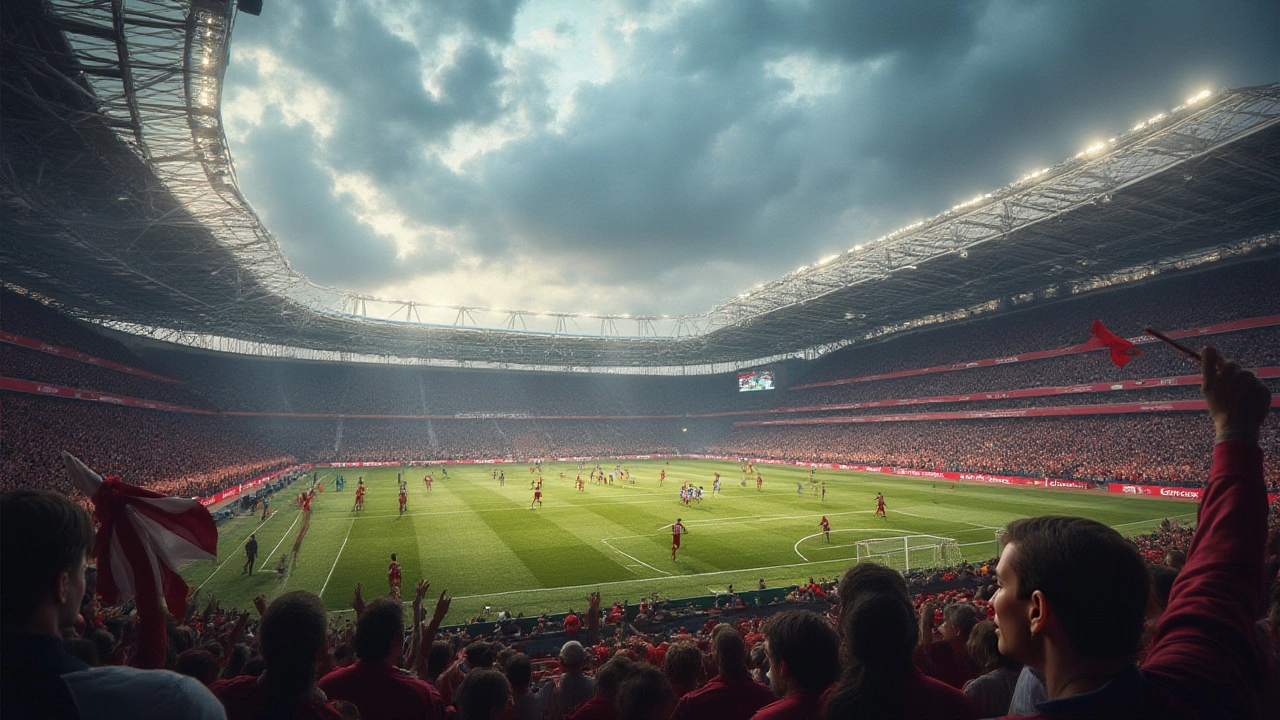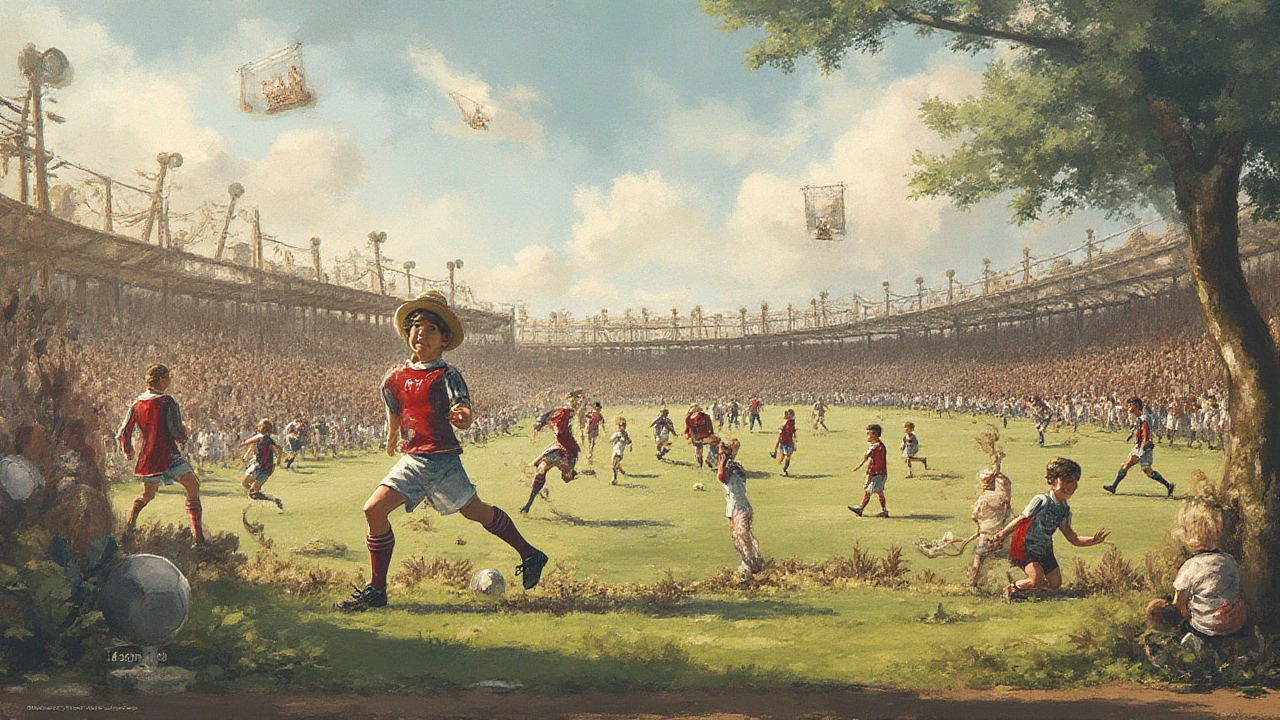
Football July 9, 2025
FIFA Football (Soccer): The World's Game Explained in Detail
Imagine one event watched by more than half the planet’s population. That’s not a movie premiere or a political debate—it’s a football match. Not American football, but the game the rest of the world calls football and the United States usually calls soccer. It’s not just a sport; for many, it’s practically a way of life. The word “FIFA” gets tossed around when big tournaments hit TV screens, but what does FIFA actually mean, and how does it relate to football or soccer? Whether you call it football or soccer, understanding FIFA is the key to understanding everything about the world’s most popular game.
What Does FIFA Stand For and Why Does It Matter?
Let’s start with that mystery acronym. FIFA stands for Fédération Internationale de Football Association. Quite a mouthful, right? It’s French, and it basically translates to International Federation of Association Football. Founded in Paris back in 1904, FIFA came to life because Europe’s earliest teams realized they needed common rules, organized competitions, and someone to handle the chaos every time two teams from different countries wanted to kick a ball. Fast forward and FIFA is now the authority for everything related to international football—whether it’s setting rules, organizing global tournaments, policing transfers, or promoting the game in every tiny corner of the map.
FIFA isn’t just some suits sitting at desks in Switzerland (even though their headquarters are in Zurich). Think of them as the governor of football—deciding how the game is played, how it evolves, and who gets to host what. For example, when you watch the World Cup, that’s a FIFA event. This organization establishes the basic laws of the game, rules about player eligibility, standards for fields, ball size, and even which kits teams can wear. Some people think FIFA just puts on tournaments, but their influence stretches from the biggest stadiums in Europe to developing kids’ leagues in sub-Saharan Africa.
FIFA also has a complex membership—over 200 national associations belong to it. That’s more members than the United Nations. If you want to run a league or national squad recognized worldwide, you need FIFA’s blessing. This organization helps keep cheating in check, tracks match-fixing, and punishes any shady business that creeps into the game. But FIFA isn’t always the hero—there’s been no shortage of scandals, usually about corruption, politics, or questionable bidding processes for big competitions. But even the controversies demonstrate how much power and money are involved when you’re at the top of a sport beloved on every continent.
Interestingly, FIFA has fueled the growth of football—not just at the elite level, but also with development programs. Grassroots football, women’s tournaments, and investment in underserved regions are all boosted by FIFA’s global reach. The organization has set some ambitious goals, like bringing the Women’s World Cup to more screens and making sure the men’s World Cup rotates between continents for more fairness.
Ever noticed how the rules of football rarely change? That’s partly because FIFA supports the International Football Association Board (IFAB), which has been the keeper of the laws of the game since 1886. If you’re ever frustrated that offside is still offside or VAR calls are a hot topic, blame or thank FIFA. The federation always has a hand in discussions about handballs, red cards, or even whether a game gets moved for a torrential downpour. They’re everywhere.
The Game: Rules, Structure, and the FIFA Touch
Football or soccer is pretty straightforward, even if some rules can get a little quirky. Two teams, eleven players each, one ball, two goals. The goal? Score more than the other team by getting the ball into their net. The field is rectangular, marked off with touchlines (that’s what everyone else calls sidelines) and a halfway line. The goals sit smack at the middle of each short end. The official size for FIFA-sanctioned matches? Usually 100-110 meters long and 64-75 meters wide. That’s about 110-120 yards by 70-80 yards for those more comfortable with imperial measurements.
It’s not just running and kicking, though. FIFA’s official rules—known as the Laws of the Game—break things down in detail. There’s the infamous offside rule, which basically says you can’t watch your striker camp out behind defenders waiting for an easy pass. There are yellow cards for minor fouls and red cards for serious infractions, meaning a player’s out for the rest of the match (and their team plays short-handed). Substitutions used to be limited to three, but recent tweaks allow up to five in certain tournaments, partly thanks to pandemic-era adaptations. FIFA coordinates these tweaks, making sure the sport evolves without losing what makes it special.
The duration? Matches are usually 90 minutes, split into two halves. If a knockout game requires a winner, extra time is played—30 more minutes—and, if needed, a penalty shootout decides things. FIFA gets picky about the tiniest details. The ball can’t weigh just anything—official balls must weigh between 410 and 450 grams and have a circumference between 68 and 70 centimeters. Want to feel what pros play with? Head to a sports shop and try holding an official FIFA ball; it’s a real difference from cheap playground stuff.
FIFA also governs player eligibility. You can’t play for two national teams in World Cup qualifiers, and the residency rules get strict if you grew up in one country but have parents from another. There’s also a robust system for checks against doping or illegal contracts. Referees, by the way, are also under FIFA jurisdiction for international games; they get rigorous fitness tests and must follow strict codes of conduct. Watch next time—some of those referees take as many sprints as a midfielder.
If you’re trying to figure out why games seem so similar whether you’re watching in Brazil, Japan, or Nigeria, thank FIFA. Everything from how teams set up to the spacing of penalty spots is standardized. There are slight tweaks in lower leagues or youth football, but at the highest level, it’s all FIFA’s blueprint—right down to those iconic yellow and red cards everyone dreads.
There are also innovations FIFA keeps introducing. Goal-line technology, where cameras and sensors ensure the ball really crossed the line, is now a must in high-level tournaments, cutting out arguments about whether a goal really “counted.” Then there’s VAR—video assistant referee—which lets officials review goals, penalties, and red cards with video instantly. Love or hate it, VAR is changing how we see football moments. Expect even more changes; FIFA always has its eye on ways to make football faster, fairer, and more global.

FIFA’s Big Tournaments and The Global Obsession
There’s no sporting event bigger than the FIFA World Cup. The men’s tournament started in 1930, while the first women’s edition was in 1991. Both draw huge crowds—stadiums packed, cities shut down, and streets filled with fans waving flags no matter if it’s midday or midnight. For a lot of folks, it’s like a massive month-long holiday. The men’s World Cup runs every four years and features 32 national teams (going up to 48 in 2026). The women’s World Cup has recently expanded to 32 teams, showing FIFA’s drive to push women’s football into the global spotlight.
The World Cup isn’t just a trophy—it’s a huge business. Billions in sponsorships, national pride on the line, and a big jump in tourism every time a country hosts. Brazil, Germany, France, and Argentina have all tasted glory, and there’s endless debate about who delivered the best World Cup team in history (Brazil’s 1970 side led by Pelé is a popular answer). The youngest-ever World Cup winner was Pelé himself at 17, way back in 1958. There’s no shortage of records—Italy managed to miss out on qualification entirely in 2018, shocking their nation and proving that nobody’s spot is safe.
But FIFA’s tournament list is a lot longer than just the flagship event. There’s the U-20 and U-17 World Cups for both men and women. Club World Cup lets the best teams from every continent square off. There’s also the FIFA Futsal and Beach Soccer World Cups, bringing variations of the game to the spotlight. The Olympics also feature football; FIFA helps coordinate qualification and player eligibilities here too. That kid you see in a small Canadian town kicking a ball? With dream and a bit of luck, he might one day end up at a World Cup, and it’s FIFA that organizes that ladder to stardom.
FIFA tournaments also carry a powerful political punch. Countries spend huge amounts to host them—sometimes building cities from scratch (look at Qatar 2022). These events spark debates about worker rights, national identities, and social progress. Sometimes, a World Cup can even help heal wounds; Nelson Mandela leveraged the 2010 World Cup in South Africa to foster unity after years of apartheid. On the other hand, tournament controversies—about hosts, corruption, or boycotts—spark massive headlines, reminding us just how much is tied up in this so-called simple game.
Maybe the most fascinating thing about FIFA’s tournaments is how they drive cultural exchange. Not only do fans travel and swap flags, but local economies get a massive boost, and kids worldwide get to see stars like Kylian Mbappé, Megan Rapinoe, or Lionel Messi inspire on the biggest stage. Every match, every heartbreak, every shot at glory—FIFA’s behind it all, pushing nations to train, invest, and dream big.
Why FIFA Football Grabs The World (And Tips for Getting Involved)
Try traveling anywhere beyond your home suburb—maybe hit a bar in South Africa, a village square in Spain, or a tiny café in Vietnam—and odds are you’ll find someone kicking a football or talking about last night’s match. That’s the grip FIFA’s game has on the world. There’s hardly a barrier to entry: no expensive kit, no private courts, not even proper shoes required. A battered ball and any flat space is a football pitch.
Part of football’s global reach is thanks to FIFA’s push to make the sport accessible. The organization pours millions every year into building pitches, coaching schools, and organizing youth tournaments. Want to get a grassroots team started in your city? FIFA has programs and funding for that. They’re also a big advocate for women’s and girls’ participation, sponsoring inclusion campaigns in countries where even kicking a ball was once off-limits to half the population.
If you want to understand the thrill, watch a high-stakes match—bonus points if it’s a derby (local rivalry) or a do-or-die World Cup knockout. Notice the heart-pounding tension, the cheers, the gut-wrenching agony when a shot bounces off the post. This isn’t just about goals, but everything around them—the stories, the drama, the hope. There’s a reason more than 3.5 billion people tuned in to the 2018 men’s final; for reference, that’s close to half of every person on earth.
Trying to get more involved as more than just a spectator? Start with basics. Join a local amateur team or look for pick-up games. If your skills are rustier than a forgotten bike, that’s fine—learning the ropes is part of the fun. There are endless YouTube tutorials breaking down dribbling, passing, and even tactical ideas. FIFA’s own website is packed with resources on coaching, basic rules, and even official documents (if that’s your thing). Volunteering at tournaments or youth academies is another way to dive deeper; FIFA events depend on thousands of volunteers, and it’s a great way to meet new people from all over the world.
Want to impress at your next football banter session? Drop some quirky facts. The fastest red card in World Cup history? Uruguay’s José Batista, who got the boot just 56 seconds into a match in 1986. Or mention that the most goals scored in a single FIFA World Cup match was 12, when Austria beat Switzerland 7-5 in 1954. Knowing these oddball stats doesn’t just make you look sharp—it shows why so many love dissecting the game’s history.
Remember, the heart of FIFA football or soccer is simple joy—a group of people, a ball, one goal: score more than the other folks. You could be playing in a sandlot in Nigeria or watching the World Cup final in a Tokyo bar. For a little while, it feels like the world shrinks down to that ball and those two goals. FIFA might be the big boss, but the world’s passion, sweat and dreams—that’s yours for the taking.




